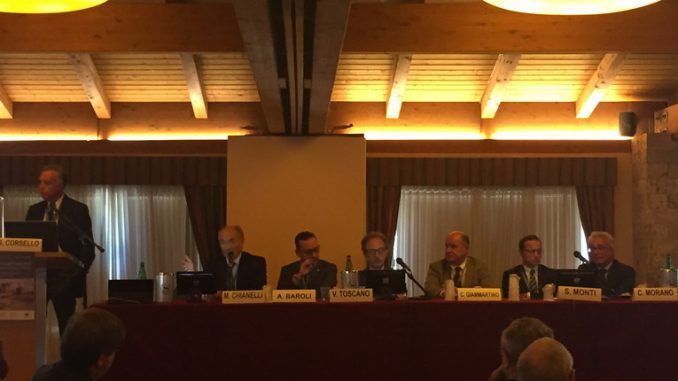Thyroid, new guidelines for thyroid cancer
Thyroid cancer, albeit rare, is the most frequent endocrine cancer and concerns about 5% of thyroid nodules, which instead are very common with a prevalence of almost 50% of the population. According to the latest Airtum report, in 2017 there have been more than 15.000 new diagnoses of thyroid cancer and it is expected that it will become the second most frequent tumor in women by 2020.
This increase in the number of diagnosis, not associated with an increase in mortality (in 76% of cases heal), seems to be associated with the increasing frequency of screening and the greater accuracy of the exams that allow you to discover small tumors, not still palpable. This scenario makes it clear the importance of greater appropriateness of diagnostic and therapeutic strategies to avoid the risks of over-treatment.
Draw up new guidelines for thyroid cancer
The main scientific societies, the Italian Tyrolean Association (AIT), the Endocrinologi Medici Association (AME), the Italian Society of Endocrinology (SIE), the Italian Association of Nuclear Doctors (AIMN), the Unitary Italian Society of Endocrine Surgery (Siuec) and the Pathological Anatomy and Cytological Diagnostic Diagnostics (Siapec), have felt the need to draw up new guidelines for the optimal management of thyroid nodules – both benign and evil – based on one’s consolidated experience, considering the particular Italian situation, both in terms of organization of the national health system and in terms of epidemiology.
The new Italian guidelines for nodular pathology and differentiated thyroid carcinoma will be presented during the 6th Thyroid Uptodate, which will be held in Rome on 28 and 29 October. The annual scientific updating appointment on thyroid pathologies will be an opportunity to discuss and deepen the new scientific acquisitions, the therapeutic and management innovations of the main thyroid diseases.
Rinaldo Guglielmi, Past President Ame
“The need for a unitary and shared document – explains Rinaldo Guglielmi, Past President Ame, Endocrinologi Medici Association – It is shared by all scientific societies given the operating uncertainties that derive from the numerous international guidelines.
Given the epidemic character of the nodular disease of the thyroid in our country, the document allows you to identify the subjects who deserve greater diagnostic attention and avoid submitting most patients with nodules to unnecessarily investigations who do not present elements of concern, without neglecting That minority of subjects that deserve greater attention, presenting, for example, nodules of larger dimension, micro-calcifications and irregular margins.
In addition to identifying the conditions and characteristics that deserve more diagnostic insights, the most appropriate therapeutic approaches have also been analyzed. For example, in the document it is recommended to proceed with less extensive and invasive surgical interventions, confirming the new tendency to prefer conservative interventions.
This approach allows to reduce the replacement therapy requirement and is associated with a lower onset of metabolic and anatomical complications. Furthermore, in the absence of alarming characteristics, intervention is avoided when the analysis between the costs and benefits for the patient is not advantageous, as in the case of subjects with concomitant diseases and therefore at high risk “.
A further element that emerges from the document is the importance of communication between doctor and patient
“According to an investigation commissioned by the Committee of Endocrine Patients Associations – Luisa La Colla, President of Cape -, 1 in 3 person would like to receive more information on the disease, on the available treatments and any side effects in addition to diagnosis,.
It is important that the main endocrinological scientific societies have shared approaches and strategies for these pathologies and recognize the importance of correctly informing the patient about the procedures to which he will have to undergo and the possible alternatives, highlighting the advantages but also the possible complications. A diagnosis of thyroid cancer is often associated with an emotional crisis which, if not supported by the help of professionals, can last over time.
At the basis of this psychological impact there are mainly the uncertainty of the prognosis, the poor psychological support, the impact on the work activities and the possible side effects of the treatments. Of great meaning – underlines the glue – It is also the identification that the guidelines make subjects more at risk that allows not to create unnecessary alarmism in people, fortunately most, who have nodules that do not require intervention “.
